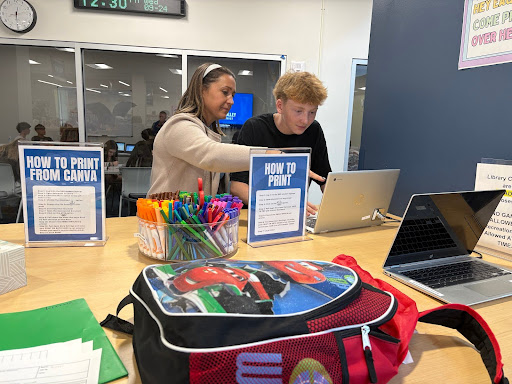
Wait what?!
Do not fret! The regular action deadline is January 15th, and early action is November 1st for Colorado schools (varies out of state). There is plenty of time to construct a beautiful application that will make you any school’s top choice.
Here is a breakdown of (mostly) everything you need to know about applying to college.
Decisions, Decisions…
Early decision, action? Regular decision? What does it all mean? Most schools have multiple deadlines depending on the type of application you are planning to submit.
Early action is what it sounds like. You submit your application earlier than the regular deadline. This varies school to school (usually around October or November). This can offer an advantage, especially with competitive schools, because you are in the first pool of applicants and the first to be considered.
With early action, you can apply to multiple schools, hear back sooner, and then have time to make a choice. In early decision, though, you are limited to submitting one application with a “binding agreement,” meaning if you are accepted, you must go to that college.
Important: If you apply early decision and get in, but have applied with regular decision to other schools, you must withdraw the other applications.
The regular action deadline is typically in January or February (once again, dependent on the school). Once you hear back from either early or regular decision, you normally have until May 1st to make a final decision.
For further information, College Board is a great resource.
So Much for a Common Application
Most schools in America use the Common App, which is a database that collects your general information (family, demographics, income, etc.) for colleges to access. It also provides a space to submit college-specific questions.
The Common App is fairly straightforward, but has a number of requirements that will be discussed later on.
If you are looking to live out the “California Dream” and apply to any UC (University of California) schools, those are all through a separate database. The UC Application is similar to the Common App in that you fill out personal information, but instead of college-specific questions, you answer a list of “personal insight” questions, then select your desired campuses.
If you go through the work of completing the UC Application, it is suggested that you apply to multiple campuses. This will significantly raise your chances of getting in, even if the one that accepts you is not your first choice.
Some schools use their own application separate from the Common App and the UC system. While these are unique with each school, they most likely have questions similar to what you have seen.
So many requirements…
As mentioned, the Common App has essentially two sections: Personal questions and college specific questions. To access the personal questions (for those who still need guidance), navigate to the top of the page and click “Common App,” they should be displayed there.
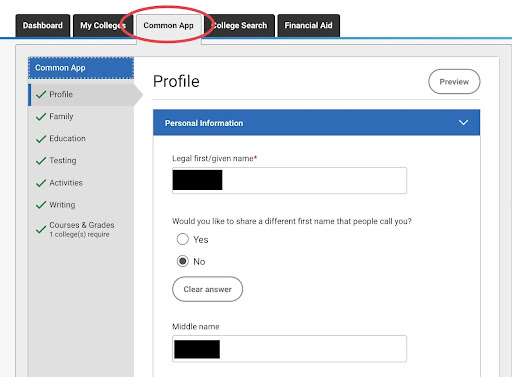
Make it your goal to see those green checkmarks next to each category. If you do not, it means there is something left undone.
Personal Statement
Under this section is where you will find the infamous “Personal Essay.” While this may seem daunting, you don’t have to give your entire life story. What colleges are looking for is a story that makes you unique compared to other applicants.
Each story is different and there are endless ways to approach it. Once you think you have a final product, get as many people to proof-read it as possible. More people means a more refined essay.
College Specific Questions
The next step is to fill out the college specific questions. These are found under the “My Colleges” tab. Each school you have selected should have its own drop down menu and the questions are located there.
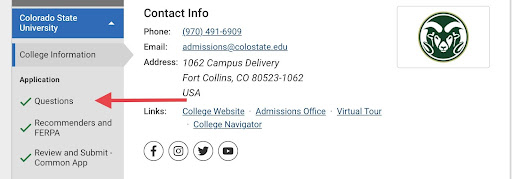
This is also where you will locate the fee waiver for Colorado Free App Day.
Supplementals
Some schools require supplemental essays, which are school specific. They come in a wide range of topics but most share a common theme: Why this school? Or Why you?
If you come across these prompts (which you most likely will in one way or another), start with one and give it the most effort. Once you have it, take it and remaster it to fit other schools’ prompts. This will hopefully save you, and your back, from hours hunched over a computer.
With this said, some essay prompts are completely random and do require extra work. Still, writing a strong essay to begin with, can give a nice cushion of words to fall back on.
Here are some more tips to craft a flawless essay.
Letters of Recommendation
Letters of recommendation and transcripts are separate from the Common App. Broomfield uses Naviance as the platform that tracks all things concerning you and your relation the school, ie. letters and transcripts.
At this point, seniors should have asked for their letters of rec either last year, or at the beginning of this year. From there, it is the teacher’s job to submit it to Naviance. To view the status of your letter(s) you can navigate to the “Colleges” tab at the top of your Naviance home screen. Look under “Apply to College” and click “Letters of Recommendation.”
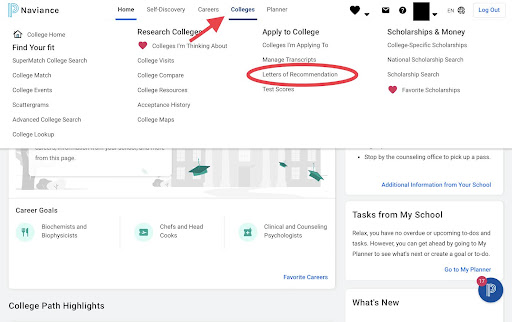
There, the status of your letter should be shown as “Requested,” “In Progress” or “Submitted.”
It is also worth mentioning that letters of rec are able to be uploaded after you have submitted, so you can still apply Colorado Free App Day even if you do not have your letter ready.
Transcripts
To purchase transcripts, go to Broomfield’s website, hover over “Counseling & Support” and click “Transcripts.”
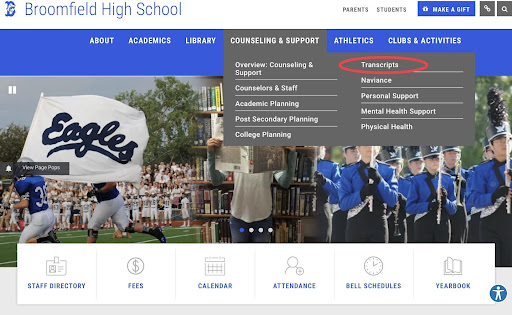
From there, click on “Currently Enrolled Transcript Request,” that will take you to the official request form.
Fill out all the necessary information. Once you reach the bottom, you have the option to purchase another. Each transcript costs 2 dollars, and you can purchase up to six at a time.
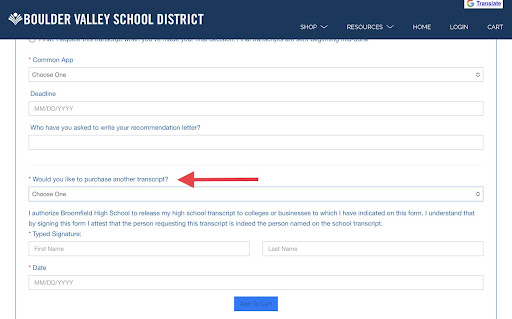
Note: Once Broomfield’s Counseling Office gets the request, they will send it directly to the school so there is no need to worry about uploading it to any applications.
Finances!
The Common App requires that you identify your family’s financial status. Unless you are the family accountant, it is best to hand off this portion to your parents or guardians.
This will reveal if you qualify for any need-based financial aid. Even if you don’t think you do, it is still a good idea to fill out the FASFA form, which can get you government loans to pay for college.
This year, FASFA is making major updates to their system resulting in the application release to be pushed back from its usual October 1st date to December 1st. This however, is known by colleges, and their final financial outlines with your acceptance will be adjusted accordingly.
Life after Submission
Once you submit, you can expect to receive an email within a week from your schools requesting you to create a portal account. Each college has their own portal (with some exceptions), which is used for updates about your application status.
This is where you will see the admission decision, which of course will include if you got in, along with any merit or scholarships you apply for.
Final Thoughts
Hopefully this armed you with the knowledge to take on applying for college with confidence. With that said, do not hesitate to reach out to one of Broomfield’s Counselors, or read this article if you still have questions.






